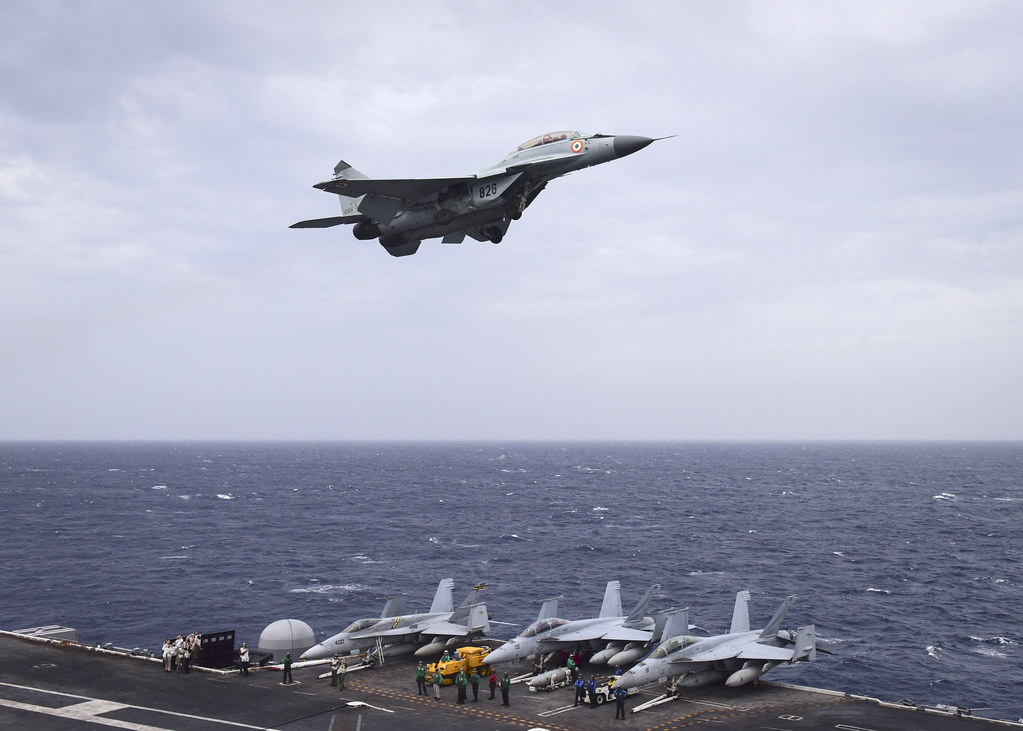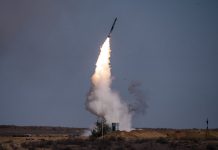The Indian Navy’s first domestically-built aircraft carrier, INS Vikrant, could end up having HAL’s upcoming fifth-generation Twin Engine Deck-Based Fighter (TEDBF) jet on her flight deck, if reports are to be believed.
And as things stand, the home-grown fighter could give stiff competition to Western aircraft such as Rafale and Super Hornet as the Navy is already on the lookout for a twin-engine fighter jet.
According to reports, the INS Vikrant will start sea trials soon, which could pave the way for her commissioning into the service later this year. The carrier is currently moored near a shipyard in Kochi in the southern India state of Kerala.
According to Naval News, the INS Vikrant will be equipped with the existing Russian-made MiG-29K Fulcrum fighter jets initially.

However, it is likely that the Hindustan Aeronautics Limited’s (HAL) TEDBF aircraft will occupy the position whenever they are inducted into the Navy.
HAL’s Upcoming Fighter Jet
The TEDBF fighter jet, which is currently under development, will replace the Indian Navy’s MiG-29K fighter jets.
The twin-engine, carrier-based, multirole TEDBF fighter is a canard twin-engine variant of the Tejas fighter jet. It is being jointly developed by HAL and Aeronautical Development Agency (ADA), an autonomous organization under India’s Ministry of Defence.
The development of a new fighter was revealed by the DRDO in April last year, with the aircraft being showcased at the Aero India 2021 last month.
The upcoming fighter jet is expected to operate from the Indian Navy’s short take-off but assisted recovery carriers — INS Vikramaditya and INS Vikrant.
TEDBF, Rafale and Super Hornet
With TEDBF expected to be ready for induction not before 2026, India is looking for a twin-engine carrier-based aircraft. It is believed the Navy has zeroed in on two names — the French Dassault Rafale and the US’ Boeing F/A-18 Super Hornet. According to analysts, both are relatively mature designs and are considered low-risk options.

India has purchased 36 Dassault Rafale jets, of which 11 have already been delivered to the Indian Air Force. Although the IAF Rafales are land-based aircraft, they are not much different from the carrier-based version of the fighter jet.
And if the Indian Navy indeed decides to go with the Rafale, it will be based on IAF’s first-hand experience of operating the fighter jets.
On the other hand, the twin-engine, multirole, carrier-capable Boeing F/A-18 Super Hornet fighter is another great option for the Indian Navy.
The Super Hornets are the advanced variants of the McDonnell Douglas F/A-18 Hornet, which according to Boeing, is among the most lethal, advanced, combat-proven, multi-role frontline fighters in service to date.
The Super Hornet fighter jets can carry air-to-air missiles and air-to-surface weapons. They also possess an internal 20mm M61 rotary cannon.
Why TEDBF Has An Edge Over Other Two
Unlike the Rafale and the Super Hornet, which are both 4.5 generation fighter jets, India’s upcoming indigenous TEDBF fighter is expected to be a fifth-generation aircraft.
As per reports, the TEDBF fighter will have a higher thrust and payload capacity, which would put them on a par with the French-made Dassault Rafales.
According to the latest figures provided by the ADA, the TEDBF fighters will be able to attain speeds of Mach 1.6. The aircraft, which will have a length of 16.2 meters (53ft in), is also expected to be a true multi-role fighter.
The TEDBF will be able to carry out combat air patrol (CAP), interception, ground attack, strike, maritime strike, reconnaissance, electronic warfare (EW), and buddy-refueling.
According to reports, the fighter jet will save some weight by having an internal weapons bay and will include the advanced short-range air-to-air (ASRAM) and Astra beyond-visual-range (BVR) air-air missiles.
It will also be able to carry Rudram-1 and Rudram-2 anti-radiation missiles. All these features make the HAL TEDBF a future fighter jet that could be the most suitable one for the INS Vikrant.
Follow EurAsian Times on Google News




